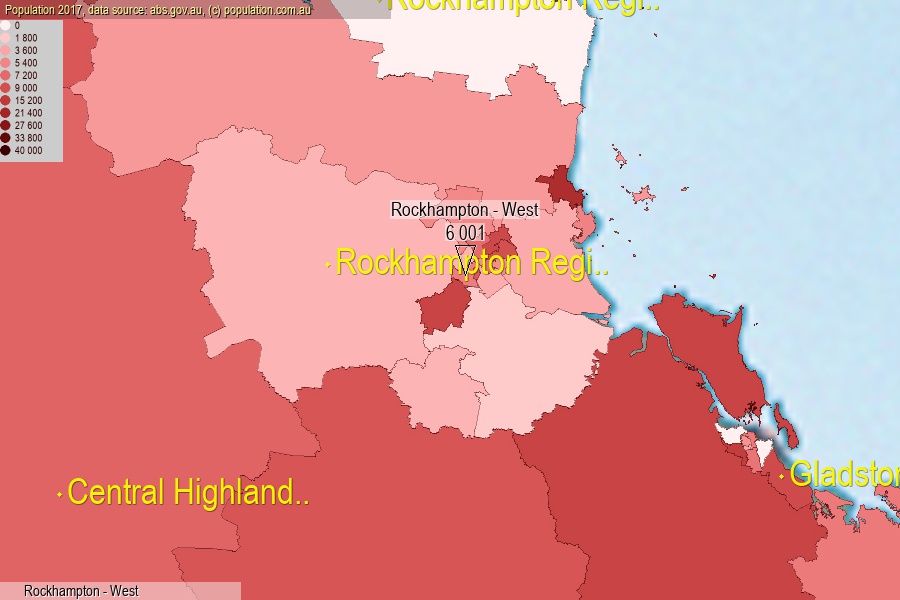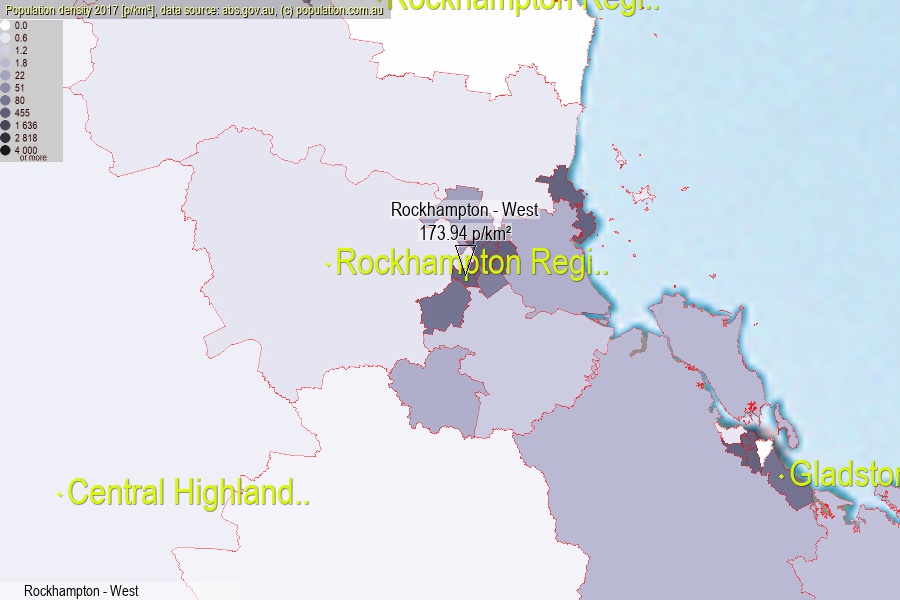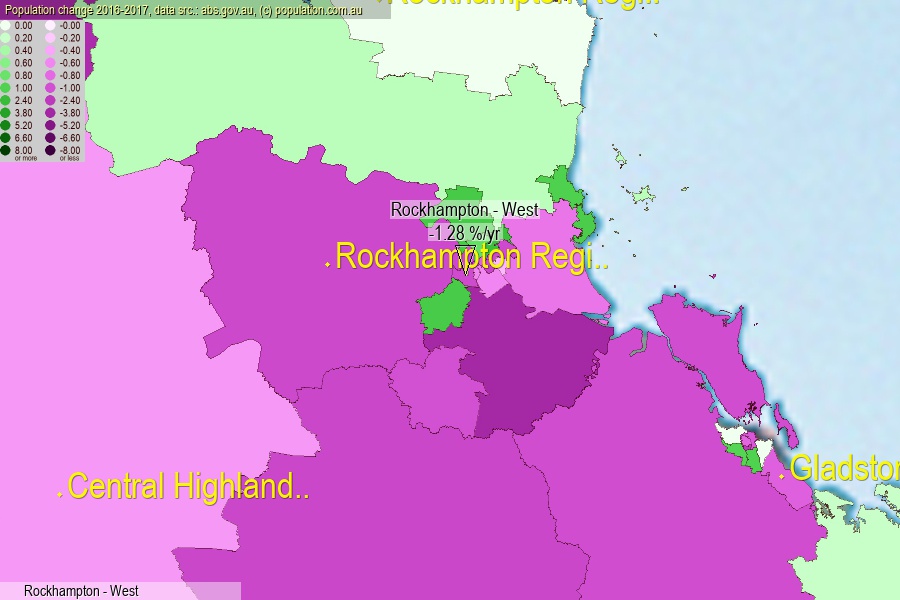 population.com.au
population.com.auLast official estimated population of Rockhampton - West (as Statistical Area Level 2) was 6 001 people (on 2017-06-30)[2]. This was 0.02% of total Australian population and 0.12% of QLD population. Area of Rockhampton - West is 34.50 km², in this year population density was 173.94 p/km² . If population growth rate would be same as in period 2016-2017 (-1.28%/yr), Rockhampton - West population in 2025 would be 5 412. [0]



Click to enlarge. Rockhampton - West is located in the center of the images.
Population [people], population density [p./km²] and population change [%/year] [2]
View borders » (new window) [4]
[1991-1992] -1.32 %/Yr.
[1992-1993] -1.31 %/Yr.
[1993-1994] -1.01 %/Yr.
[1994-1995] -1.53 %/Yr.
[1995-1996] -1.21 %/Yr.
[1996-1997] -1.20 %/Yr.
[1997-1998] -1.14 %/Yr.
[1998-1999] -1.33 %/Yr.
[1999-2000] -1.37 %/Yr.
[2000-2001] -1.28 %/Yr.
[2001-2002] -1.00 %/Yr.
[2002-2003] -0.44 %/Yr.
[2003-2004] +0.33 %/Yr.
[2004-2005] -0.05 %/Yr.
[2005-2006] +0.25 %/Yr.
[2006-2007] +0.18 %/Yr.
[2007-2008] +0.21 %/Yr.
[2008-2009] +0.55 %/Yr.
[2009-2010] +0.71 %/Yr.
[2010-2011] +0.91 %/Yr.
[2011-2012] +1.16 %/Yr.
[2012-2013] -1.13 %/Yr.
[2013-2014] -0.97 %/Yr.
[2014-2015] -1.68 %/Yr.
[2015-2016] -0.80 %/Yr.
[2016-2017] -1.28 %/Yr.
[0] Calculated with linear interpolation from officially estimated population
[1] Read more about SA2 and Australian Statistical Geography Standard (ASGS) on abs.gov.au
[2] Population data from Australian Bureau of Statistics (Population and density: 2017; change: 2016-2017)
[3] Digital Boundaries: Australian Statistical Geography Standard (ASGS) 2016.
[4] Border coordinates are simplifyed using Ramer-Douglas-Peucker algorithm.